How to Treat Back Pain Using An Unusual Circle Movement
Are you stuck in the misery of back pain? Are you afraid it's never going to get any better? Are you completely lost and unsure of how to deal with it anymore?
I get it. I remember the hopelessness of chronic pain and how much it stole from my life. I was afraid to move, depressed and fearful that it would get even worse. I was absolutely lost and couldn't find anyone or anything that would help. All I wanted was to travel, have fun and go on adventures. I wanted to spend time with the important people in my life doing things that made me happy.
Maybe you've tried meds, stretching, strengthening, surgery, creams, massage, or all of the above... but you're still stuck.
I want to let you know that there is a way out. I went on a long journey and learned that back pain is a result of the habitual way that I use my body. I discovered and applied methods for changing the deep seated habits which were keeping back pain "turned on". Now I get to have fun travelling, rock-climbing and doing all the adventure stuff with those important people in my life.
I cannot cure your back pain for you, but I can help you learn to find and change your own habits that keep back pain active. In the rest of this page I'd like to share a first baby step. It's an unconventional practice that will move you a little closer to a pain-free back. The practice will require some time... perhaps 15 minutes or so. It will also need your full attention. If you can follow along with my instructions then you should get a sense of the improvement that is possible.
Lets begin...
1. Create conditions for optimum sensitivity
In order to treat back pain, it's important to feel. To find out what your movement habits are, you need to sense your body using your in-built senses.
The problem with back pain is that it's such a "loud" sensation that stops you sensing anything else. It's like trying to have a conversation with a friend in a nightclub. They're speaking to you, but you can only make out the odd word here or there. It's mostly a matter of lip-reading and even then it's not clear.
If you want to have a proper conversation you need to turn down the music. Likewise with having a "body conversation" you need to turn down the volume on your pain. This will allow the quieter, (but more important) sensations to come forward in your awareness.
Turning down the volume of your pain could also be thought of as finding more comfort. So, lets think about how we could achieve that.
My first suggestion is to give yourself a break from the fight against gravity. Many of the muscles that are involved with back pain are also used for keeping your skeleton upright against gravity. You can ease the load on them by lying down on the floor.
It's best to do this somewhere soft like a carpet or a rug. The best position will likely be with your knee's bent and your feet flat on the floor. This will help to flatten your lower back and improve your comfort.
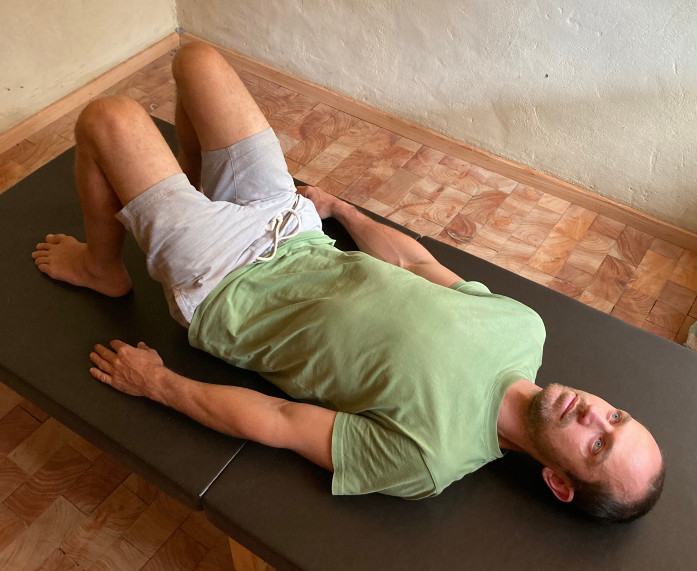
Once you're down on the floor you can find even more comfort by doing this.
Experiment with finding a position for your feet that allows your knees to balance with the least amount of effort possible. The way to achieve that is by firstly trying your feet close together. Notice what that feels like. Then try them far apart. Notice what that is like. Which is easier? Where do you think the optimum position is for them so that you're the most comfortable? The sweet spot is somewhere in between those 2 extremes.
Then try moving your feet close to your pelvis. See what that feels like. Then move them far away from your pelvis. Where is the sweet spot for maximum comfort here? Where can you position your feet so that your knees rest softly with as little effort from you as possible to keep them there?
Depending on your body, you may also like to experiment with having some padding under your head. Perhaps a towel or a pillow. Experiment with different heights until you get goldilocks perfect.
It's worth spending some time here to dial down the pain as much as you can. This is what will allow you to feel some of those fainter sensations you wouldn't feel otherwise.
2. Take a mental snapshot of your body
I love looking at before and after pictures. It's nice comparing changes side-by-side.
In this step, you're going to take a before picture. Except instead of using a camera, you're going to use your senses.
Lets focus on something simple. Pay attention to your ass. Feel it's contact with the floor. What shape of pressure does it make as it presses into the floor? Is it concentrated pressure, or spread out? Now pay attention to the left side of your ass and compare it to the right side of your ass. See if you can feel any differences in the shape of pressure between the two sides. Perhaps one has more pressure lower down, or further to the side than the other.
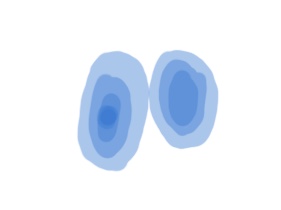
Whatever is there, just notice without trying to amend anything.
Perhaps it's not clear to you what's even back there... that's okay. What's important is that you try to sense what's there. It doesn't matter how accurate that picture is yet.
3. Notice the sharp edges in your movement
Take hold of your right knee with your left hand. Your task is to draw a circle in the air with your knee.
Go slowly. It's likely your circle is not going to be a perfect circle. What's important is that you notice what shape your circle actually is. See if you can find the sharp edges, or the places where your movement skips quickly. The places that feel sticky or jumpy. Notice if every time you go around your circle you make a kink in the same part of the circle.
Remember, go slowly. This is important. When you slow down it allows you to feel more. And feeling more is what creates conditions for change.
Have some patience here, spend some time exploring your circle and discovering just exactly what shape it really is.
Perhaps it's something like this?
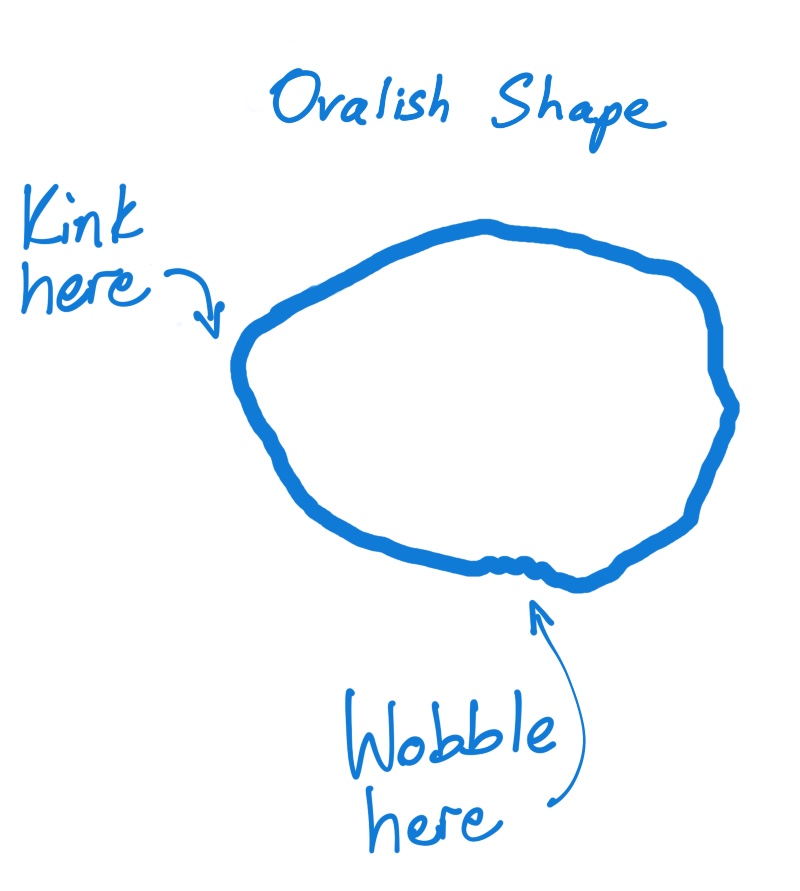
Or maybe you're struggling to even find where you are on the circle. Maybe you get lost and have to re-start again. Maybe it's too murky to feel at all. It could be something more like this...
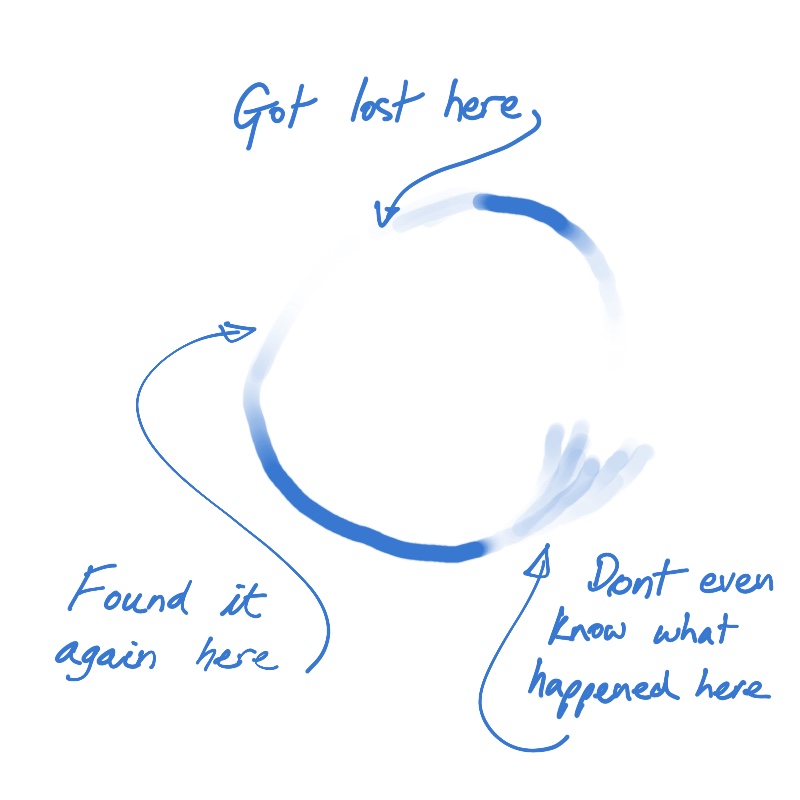
Whatever you get is okay. Just don't give up because it's too hard to feel. What's important is that you do the process. You'll still get changes even from the attempt.
The harder it is to feel, the more I encourage you to go even slower. Try taking about 5-10 seconds to make one complete trip around the circle.
You've now got some kind of visual representation of your movement habits. Whatever you felt relates to how you move in day to day life. If for example you've got a sharp edge, it's likely your brain doesn't have a map that can give you good control of your hip joint in that position. Which means in day to day life, you will avoid moving your hip into that position. Every time you walk, there is a subtle little kink that happens in your movement. Other parts of you (perhaps your back!) will have to compensate to make up for the lack of mobility.
Perhaps you can see how things like these can have flow-on effects through the rest of your body? Our hip joints are capable of making circles, they are ball and socket joints. That's what they do. But if your movement habits are preventing you from taking advantage of that capability, it means you end up stuck and stressed in other parts of your body.
Before you move on to the next step, take a rest. Just lie there as comfortably as you can. Allow your brain to digest what it has discovered for a moment.
4. Soften the sharp edges of your movement
Your next task is to take your circle and see if you can soften those sharp edges a little.
The best way is to scan through your body and look for places where you can let go of any unneccesary tension. Keep drawing circles slowly, but look for places where you're holding and try to let them go.
Maybe you're...
- holding your breath.
- holding excess tension in your shoulder.
- gripping your hands
- tensing your neck
- tightening your jaw
Try to release each of these as you find them. Notice that when you let go of this tension, your circle changes. You may find that it gets a little easier. A little clearer. A little rounder perhaps. Whatever happens, just notice what is there and keep trying to soften and find more ease in the process.
When you know there's a part of the circle coming up which isn't round, slow down more. Approach it with all the attention you can muster. Each time you go around the circle, see if you can make it a little smoother, a little softer, a little more comfortable.
After you've spent some time exploring here, take another break. Rest and let your brain do it's magic.
5. Notice what has changed
Now it's time to take a look at the "after" snapshot.
Again, pay attention to your ass. Allow yourself a few momements to get accustomed to what it feels like back there.
Notice if anything feels different than it did before. Compare the left and the right hand sides. Is there any difference in the spread-out-ness of the pressure. Or the shape, or the concentration being more to the left or the right or higher or lower? Maybe you have a clearer picture of what's back there than you did before. Maybe you have more comfort?
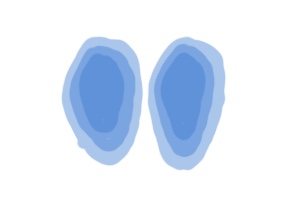
Or perhaps you can feel some other sensation in your body as you lie there that is different than before. Something might just jump out at you asking for attention.
Whatever you notice is good.
What does it all mean? Well, changes that happen in your snapshot relate directly to the way your brain organizes your body. For example, if something has "spread out" more, it likely means you've let go of some muscle tension. This is the type of tension that usually in day-to-day life is unconscious, but it causes pain.
If you can sense something clearer or differently, it means your brain has got better motor control than it did before. That translates to less stress on your back.
Any small change or improvement you make here is a WIN. This tiny little step, which just takes a few minutes, is just a taste of how you can improve your freedom of movement with the power of your senses. You may think "oh I'm still in pain though". That may be true, but it's important to realise chronic back pain doesn't develop instantly. If you've been in pain for some time, then it can take some time to get out of it. The way out is to keep building more and more awareness of yourself in movement.
6. Try with the other side
Try doing the process again with your other leg. Compare the differences between the two sides and see if you can soften or smooth out the other side too.
Then come back again and look at your "after" snapshot again. Has it changed some more? Do you like how it feels?
7. Explore other relationships
This process is just a simple exploration of one relationship between your hip and your back. There are thousands of others to explore, which can all offer potential improvements to your movement and ease. The more you do this type of exploration, the more your awareness of yourself grows.
The pathway out of back pain is not always predictable. Some movement explorations can make a big difference immediately. Others you may not even notice their affect until one day you're walking around and you realise you haven't been in pain for a while. This is the nature of working with the brain and it's habit patterns.
I can say that after spending countless hours investigating and improving my movement habits I have never moved with more ease and less pain. It's the thing that allows me to stay active and involved with life without being stuck in pain. I really owe my life to explorations like these. It is a journey worth taking.
If you would like to experience more of this type of thing, you can do so by signing up for my newsletter. You can also check out my podcast where I share not only the WHY of this process, but also some practical explorations which can help with unpacking these habits and reducing pain. You're also welcome to send me a message letting me know what you discovered. I love feedback like that.